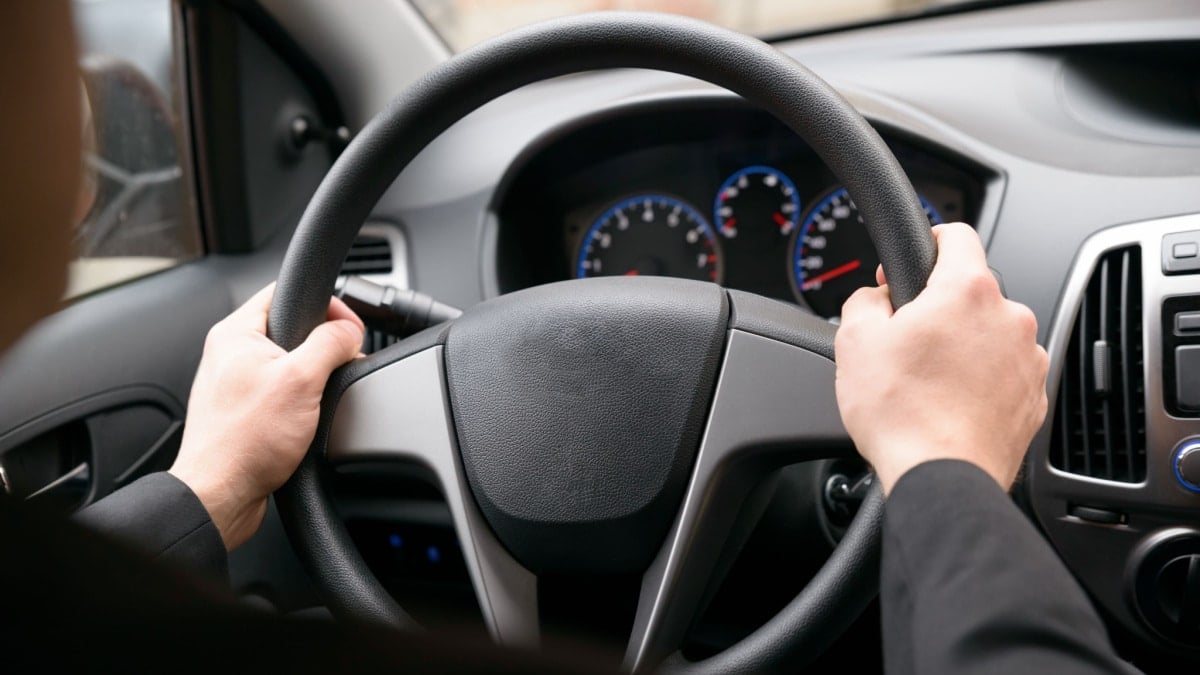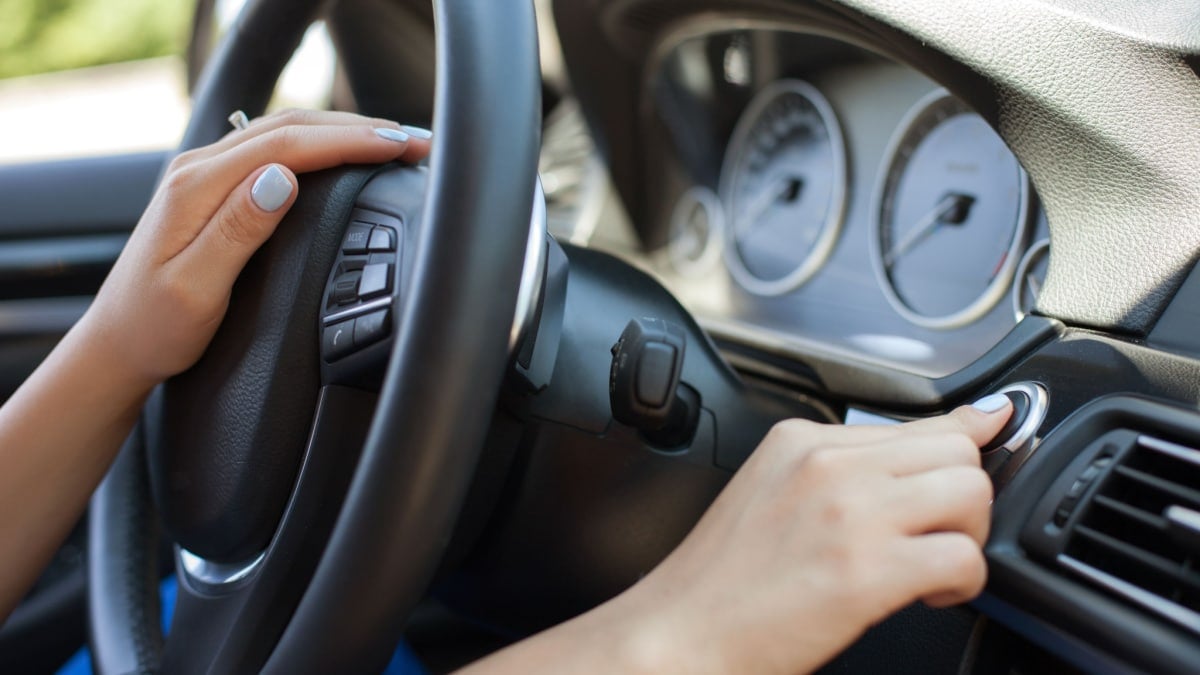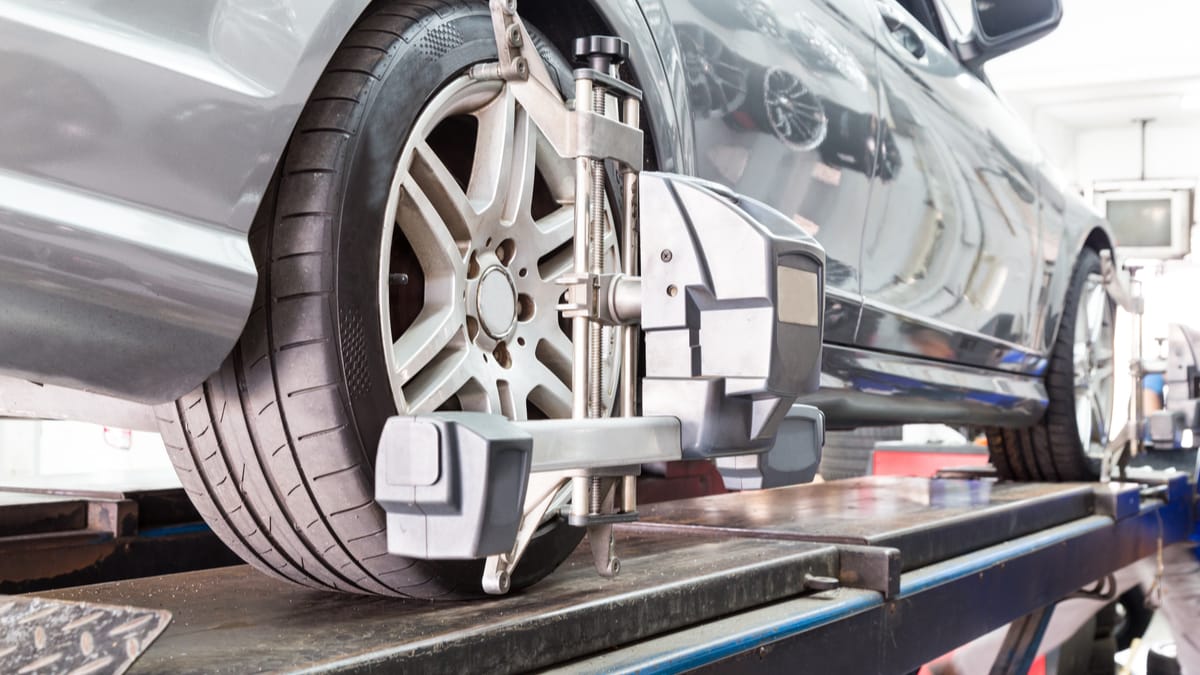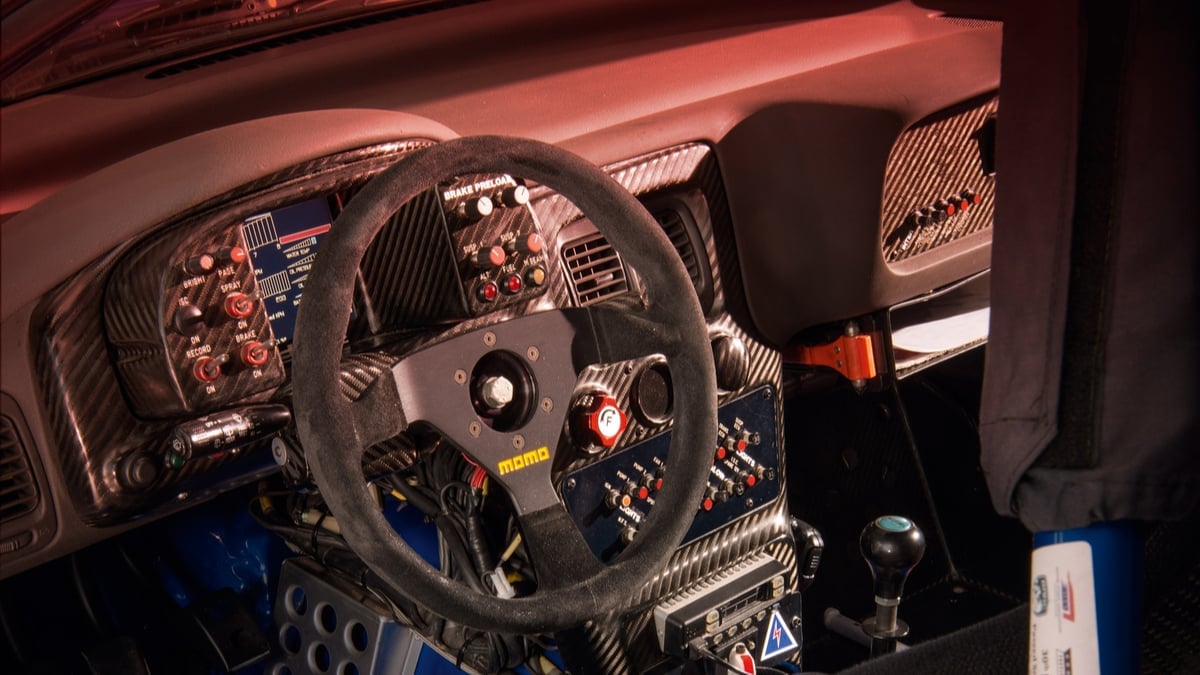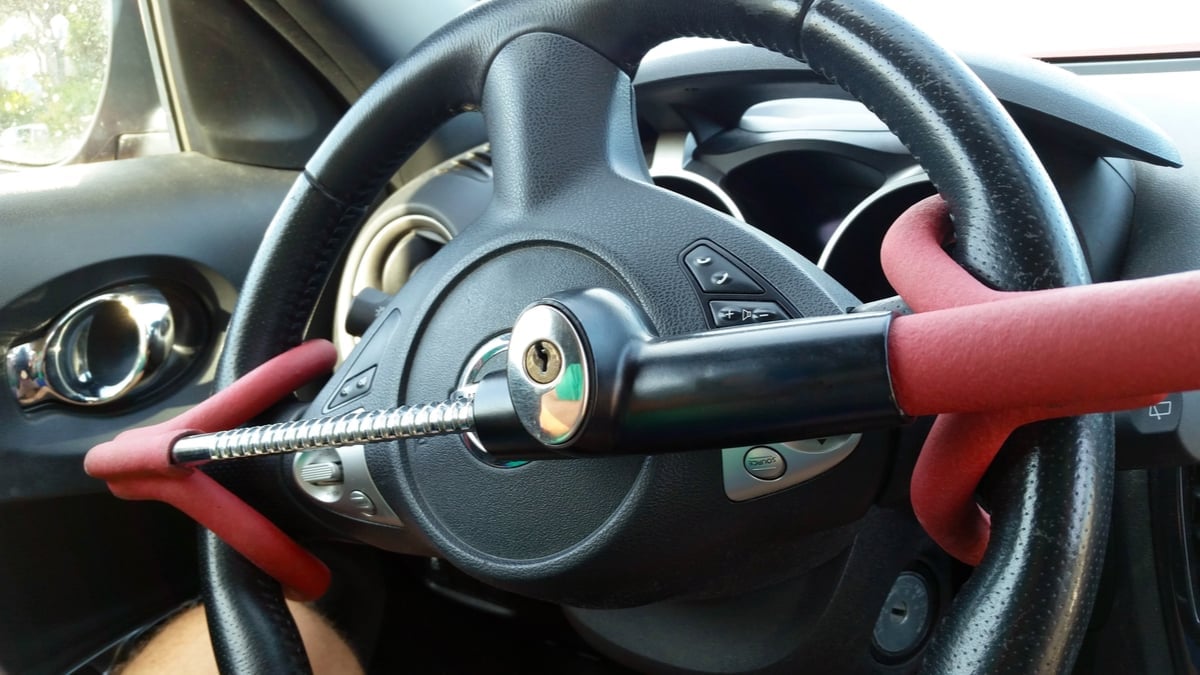Back in the day, we were always taught to put our hands on the steering wheel at the 10 and 2 o’clock positions, but that might not be the case anymore. So, where should your hands be on the steering wheel, and what are the latest recommendations?
In this guide, we cover the recommendations based on what you are doing with your hands. We also help you get ready to drive and show you some of the most common new driver mistakes. At the end of the article, we answer your top questions about steering and learning to drive.
Where Should Your Hands Be on the Steering Wheel?
It’s recommended to have your hands in varying positions based on what you are doing. If you are using both hands, you want them between 7 and 8 o’clock, plus 3 and 4 o’clock spots. When you go hand over hand, they reverse positions, while one-handed driving requires you to choose one.
1. Hand-To-Hand

This is the most common way to drive and the way recommended under normal circumstances. It’s also known as the push-pull method of steering. The recommendation used to be to put the left hand at 10 o’clock and the right hand at 2 o’clock. However, updated suggestions say to put the left hand between 7 and 8 o’clock with the left hand between 3 and 4 o’clock.
One of the hands will be responsible for pushing the steering wheel, while the other pulls it down, depending on which way you are traveling. During this method, you aren’t going to cross your hands over the wheel. Throughout your drive, your hands remain out of the way of the airbag, so there’s less risk of injury.
2. Hand-Over-Hand
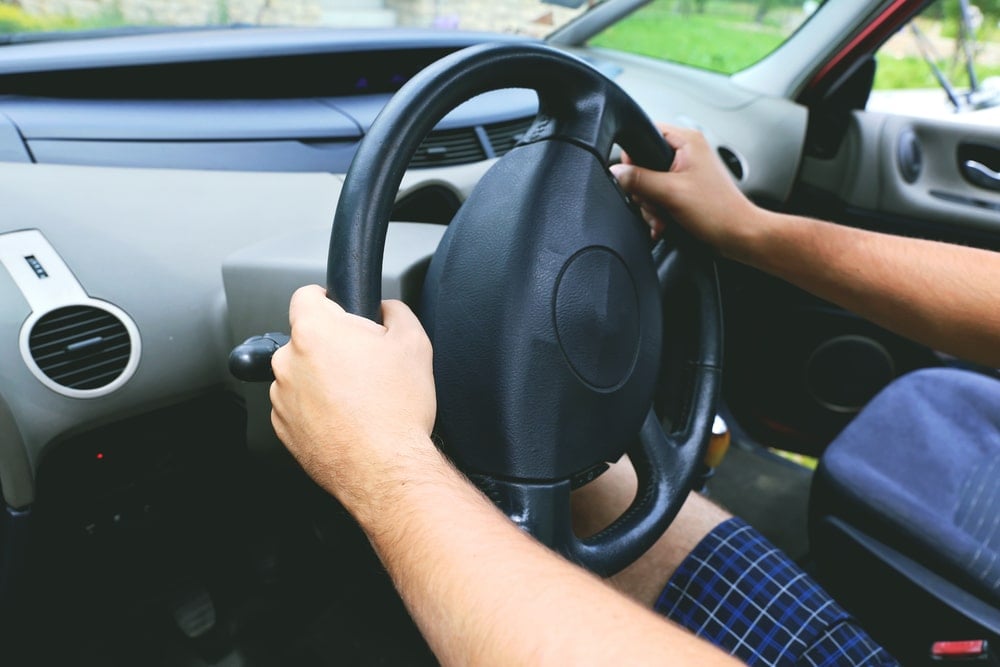
If you need to turn while moving at slower speeds, you can use a hand-over-hand method. Basically, you are switching positions of your hands while still using a push and pull technique.
Once it is safe to return your hands to the original position, it’s best to do so immediately. With your arms in front of the airbag, you are at more risk of injury if the air bag needs to deploy, so you don’t want to drive like this long-term.
3. One-Hand

It’s recommended to always keep two hands on the wheel, so is there ever a time when it makes sense to drive one-handed? If you have a manual transmission, you will need a hand to shift it at times. You may also need to turn on the windshield wipers, lights or a turn signal, which all require taking a hand off of the wheel.
In these cases, you want to leave one hand in the appropriate place on the wheel. If you need your right hand, the left will remain at 7 or 8 o’clock. Alternatively, if you need your left hand, the right would stay between 3 and 4 o’clock. This positioning helps you to remain steady while driving down the road. Plus, you can quickly return the other hand to its position when it’s needed.
There are also times when it makes sense to use a 12 o’clock position, but not often. If you need to back out of a parking space and it requires turning around to see what’s behind you, place one hand at 12 o’clock temporarily. You should look back even if you have a reverse camera. Once you have safely maneuvered out of the space, put your hands back in the original position.
How to Prepare to Drive
1. Find a Comfortable Position
Before you head out on the road, it’s very important that you are comfortable. Get into a good position in the seat and make sure your body is fully supported. By ensuring a proper placement, you maintain adequate control over the vehicle.
The best way to increase comfort is to adjust the seat positioning. Your feet should easily be able to reach the pedals and your arms shouldn’t get tired of holding the wheel. However, you also want to be as far away from the airbag as comfortable for safety purposes.
Some cars rely on manual seat positioning adjustments, which can be difficult to hone in. Otherwise, your power adjustments can come in a variety of ways, with some cars even offering eight- or ten-way power-adjustable options.
2. Adjust Mirrors

Once you are comfortable, it’s time to ensure that you can see clearly from every angle. Start by adjusting the rearview mirror. Move it around until you achieve a clear view of what’s happening behind you.
Once that mirror is adjusted, it’s time to move each of your side mirrors. Find the best placement for when you are sitting back in your seat. Just remember, even the best positioning is no excuse for failing to check the blind spot before changing lanes. Again, you may have a vehicle with manual mirrors that must be pushed into place or power-operated that get adjusted from a switch inside the vehicle.
3. Get Hands Positioned
Before you set out on a drive, you also want to make sure your hands are in the proper placement. While you might be able to control the wheel with one hand, it’s best to use two in most circumstances.
Use our guide above to determine where your hands should be. Although, when you are just starting out on a drive, it’s best to keep them in the traditional hand-to-hand position. You will need to take your hand off of the wheel to start the car and put it in gear, but you can quickly return them when you are ready.
5 Most Common New Driver Mistakes
1. Failing to Put on a Seatbelt
As a passenger in a vehicle, you may have gotten used to putting your seat belt on before heading out. However, things get more complicated when you start driving for yourself.
You can easily become distracted and forget to put your seat belt on. This isn’t just illegal, but the consequences can be fatal if a crash is involved. Not only that, but you could face massive fines if you are caught by the police.
2. Speeding
Teens can tend to drive with a lead foot, especially when they aren’t paying attention. It can also be difficult to learn how to regulate speed as a novice. It’s easy to think you are driving at a certain speed when really you are going faster.
Speeding isn’t good for anyone on the road, but it’s especially dangerous for drivers. By not understanding how much time is needed to stop, you can find yourself in a scary predicament.
RELATED: Do Speeding Warnings Affect Your Car Insurance Rates?
3. Distracted Driving
It doesn’t matter if you are a new or older driver, getting distracted is one of the top reasons for getting into an accident. However, it becomes even more deadly if you aren’t accustomed to driving on the road. One of the main sources of distraction is the phone. You may only look away for a few seconds to check a text message, but a lot can happen in that time. A child could run into the road chasing a ball, a car could pull out or a cyclist could believe you are yielding to them.
Even if you aren’t looking at your phone, becoming distracted can be dangerous. It’s important to always look at the road in front of you so you are ready to respond to whatever is happening. You can be distracted by playing with the radio, putting on makeup or eating. All of these tasks also require you to take a hand off of the wheel, which isn’t good.
4. Being Impulsive
Teens have a tendency to be impulsive with decisions. Adults have learned to be more cautious, making them less likely to cause an accident.
Instead of using caution at a yellow light, teens may decide to speed right through. It’s often common for new drivers to ignore traffic signs or new patterns, thereby leading to more accidents.
5. Not Adjusting for the Weather
With today’s sophisticated technology systems, there’s much more safety in the car than ever before. Still, teens can gain a false sense of security when driving in poor weather conditions. If you are planning to drive in wet or wintry weather, you need to use more caution.
To be safe, it’s best to avoid driving in bad weather conditions at all. You may think that your all-wheel-drive vehicle has what you need to keep you safe, but driving in winter requires a lot of skill that needs to be perfected over time.
Is 10 and 2 Steering Hand Position Still a Thing?
If you learned to keep your hands at 10 and 2, you aren’t doing anything wrong. For a long time, this hand placement is what was recommended for most drivers. Today, the NHTSA recommends putting your hands slightly lower on either side, preferably seven to eight and three to four o’clock.
Can You Fail a Driving Test for Steering?
In a standard driving test, you get penalized for violating regulations, but there are only a few that will constitute an immediate failure. You won’t fail for putting your hands in the wrong position, but the way you steer could lead to a lower score. If you fail multiple areas, you may not get your driver’s license.
Can You Fail Your Driving Test for Crossing Your Hands?
To pass your driving test, you must remain in control of your vehicle at all times. The examiner is watching you to see how well you maintain control. While you could get marked off for crossing your hands or failing to put them in the proper position, it won’t cause you to fail immediately.
Why is the 8 and 4 O’Clock Hand Position Recommended for Steering?
With a hand on each side of the steering wheel, you maintain optimal control. This positioning keeps your hands from crossing in front of the wheel, which would be impacted by the airbag in an accident. This method is also known as a push-pull variation because one hand will be pushing while the other pulls.
Whether you are a new or experienced driver, it’s helpful to figure out where your hands should be on the steering wheel. With recommendations changing over the years, it always helps to review what’s best.
If you are just getting started, practice putting your hands where they belong on the wheel. You can sit in the car and play around with the positioning until you feel comfortable trying it on the road. As an experienced driver, it’s also good to try out the newest methods, but it could take some time to break bad habits. With a little practice, you can ensure your on-road safety.
Learn more:
- Driving in Fog: 10 Safety Tips You Need to Know
- How Much Does It Cost to Go to Driving School?
- How Many Times Can You Fail a Driving Test?
Categories: Driving
